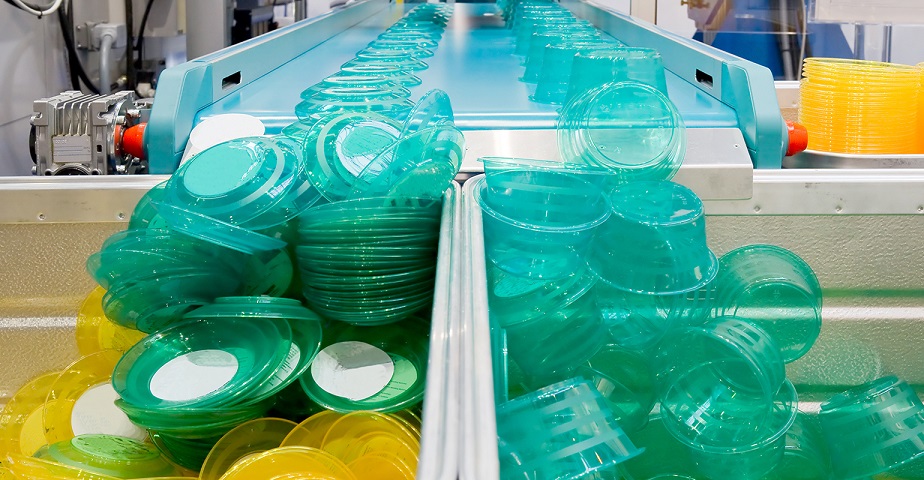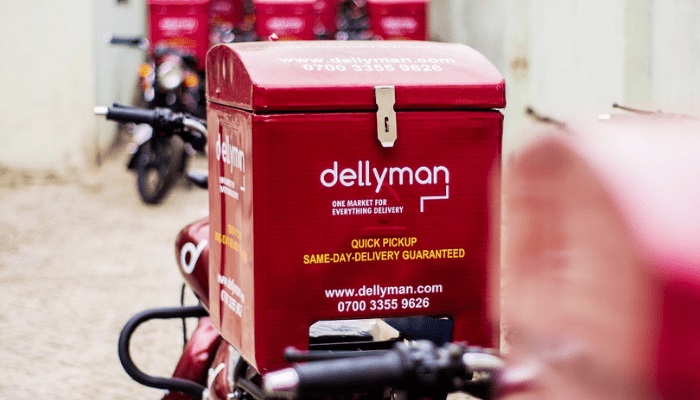Brands/Products
The Role of Plastic In Cost-Effective Product Packaging

Packaging is crucial in protecting and preserving goods, from the smallest household items to large-scale industrial products. In recent years, plastic has emerged as one of the most popular materials for cost-effective product packaging.
This article delves into the various aspects of plastic packaging and its benefits, highlighting why it’s become the material of choice for numerous industries.
- The Popularity Of PP Material In Packaging
Polypropylene, or PP material, is a type of plastic commonly used in product packaging. This versatile material boasts numerous advantages contributing to its growing popularity in the packaging industry.
One of PP material’s most notable properties is its high melting point, allowing it to withstand high temperatures without deforming or melting. This feature makes it suitable for microwave-safe containers and other heat-resistant applications.
Furthermore, PP material is resistant to moisture, which helps preserve the freshness and quality of packaged products. Its high tensile strength ensures that the packaging can withstand transportation and handling; this reduces the risk of damage to the product. With these combined attributes, PP material has become popular for packaging applications in various industries, including food and beverage, pharmaceuticals, and consumer goods. Along with packaging automation for small businesses, plastic can be a fantastic packaging solution.
- Improved Brand Visibility
Plastic packaging can play a significant role in boosting brand visibility. Thanks to its design flexibility, plastic allows for the incorporation of eye-catching graphics, logos, and colors that capture the attention of potential customers. These design elements can help differentiate a product from its competitors and create a strong brand identity that resonates with consumers.
Clear plastic packaging, such as PET or PVC, can also provide a ‘window’ that allows consumers to view the product before purchasing, leading to more informed buying decisions and increased trust in the brand. By investing in high-quality, visually appealing plastic packaging, businesses may make a lasting impression on consumers and build brand loyalty.
- Environmental Benefits Of Plastic Packaging
The environmental benefits of plastic packaging are often overlooked due to concerns about plastic pollution. However, when properly managed, plastic packaging can significantly reduce waste and conserve resources. For instance, plastic packaging often requires less material than alternatives like glass or cardboard, resulting in less waste generated per package.
Moreover, lightweight plastic packaging reduces fuel consumption during transportation, ultimately lowering greenhouse gas emissions. However, it is crucial to emphasize the need for proper waste management and recycling systems to mitigate plastic’s negative environmental effects. Efforts to reduce single-use plastics and promote more sustainable packaging materials should also be considered to minimize the overall environmental impact of plastics.
Businesses can minimize their environmental footprint by choosing plastic packaging and incorporating recycling programs while maintaining cost-effectiveness.
- Customization And Design Flexibility
Plastic packaging offers unparalleled customization options, which can help businesses differentiate their products and enhance brand recognition. With advanced techniques like injection and blow molding, manufacturers can create intricate designs, textures, and embossed patterns.
In addition to custom shapes and sizes, plastic packaging allows for a wide range of color options, enabling businesses to align their packaging with their brand identity. Furthermore, printing technologies like flexographic, offset, and digital printing can be used to apply high-quality graphics and text directly onto plastic packaging, providing clear and durable labeling that won’t fade or peel.
- Enhanced Product Protection
Plastic packaging offers excellent barrier properties, shielding products from moisture, air, and contaminants. These protective qualities help extend the shelf life of products and maintain their quality, ultimately leading to increased customer satisfaction.
In addition to its barrier properties, plastic packaging can provide impact resistance and cushioning, protecting fragile items from damage during transportation and handling. This feature is crucial for products such as electronics, glassware, and pharmaceuticals, where the integrity of the product is crucial for functionality and safety.
- Durability And Strength
Despite its lightweight nature, plastic packaging provides remarkable durability and strength. Different plastics offer varying rigidity, impact resistance, and flexibility, allowing manufacturers to select the most suitable material. For example, high-density polyethylene (HDPE) is known for its excellent strength-to-weight ratio, making it ideal for heavy-duty applications. In contrast, low-density polyethylene (LDPE) offers increased flexibility and is better suited for lightweight items.
Moreover, plastic packaging materials can be engineered to provide additional strength through techniques like corrugation or the addition of reinforcing fibers. These enhancements can help ensure that the packaging can withstand the stresses of transportation, handling, and storage without compromising the safety and integrity of the product.
- Cost-Effectiveness
One of the primary reasons behind the widespread use of plastic in product packaging is its cost-effectiveness. Plastic is relatively inexpensive to produce and transport compared to other materials like glass or metal due to its lightweight nature, which results in lower shipping costs and reduced energy consumption during manufacturing.
Additionally, plastic materials can be easily mass-produced using high-speed manufacturing processes, such as injection molding and extrusion, further reducing production costs.
The cost savings achieved by using plastic packaging directly benefit manufacturers and, ultimately, consumers too. Lower production and shipping costs can translate into more competitively priced products, which can help businesses gain a competitive edge in the marketplace.
- Ease Of Handling And Storage
From a logistics standpoint, plastic packaging offers numerous benefits in terms of handling and storage. Plastic packages are lightweight, which makes them easier to handle and transport, reducing the risk of workplace injuries and accidents.
In terms of storage, plastic packaging can be easily stacked and stored, resulting in efficient space utilization in warehouses and retail stores. Many plastic packaging designs also include features such as handles, easy-open lids, or resealable closures, providing added convenience for retailers and consumers.
- Consumer Convenience
Beyond the advantages for manufacturers, plastic packaging also offers convenience to consumers. Plastic packages are easy to open and reseal, which adds to their appeal. This feature can be particularly beneficial for food products since it allows consumers to maintain freshness and prevent spoilage after opening.
Additionally, plastic’s transparent nature allows consumers to view the product before purchasing, resulting in more informed buying decisions. In some cases, plastic packaging can also be used for portion control, with products like single-serving snack packs or resealable bags that help consumers manage their consumption.
- Innovations In Sustainable Plastic Packaging
The industry has made significant developments in sustainable alternatives by recognizing the environmental concerns associated with traditional plastic packaging. Innovations like biodegradable plastics, which break down under specific ecological conditions, and plant-based materials, such as polylactic acid (PLA) made from corn starch or sugarcane, pave the way for a greener future in packaging.
These sustainable options help reduce the environmental impact of plastic packaging and allow manufacturers to cater to the growing demand for eco-friendly products. As companies continue to invest in research and development, more sustainable, cost-effective plastic packaging solutions are expected to emerge, further solidifying plastic’s role in the packaging industry.
Conclusion
The role of plastic in cost-effective product packaging is evident across various industries. Its numerous advantages, such as lightweight properties, durability, customization options, and cost-effectiveness, make it an attractive choice for manufacturers and consumers.
As the packaging industry continues to innovate and develop sustainable alternatives, the future of plastic packaging looks promising in terms of economic and environmental benefits.
Brands/Products
Netflix to Buy Warner Bros. Discovery in $82.7bn Mega Deal

By Adedapo Adesanya
Netflix has reached a deal with Warner Bros. Discovery to buy the legendary TV and movie studio and assets like the HBO Max streaming service for $82.7 billion.
Warner Bros. Discovery is moving forward with its plans to split into two publicly traded halves in 2026. Once the split takes effect, Netflix intends to acquire the Warner Bros. half. The other half, Discovery Global, will house CNN and other cable channels. The Warner Bros. half includes its film and television studios, HBO Max and HBO.
The transaction values Warner Bros. Discovery at $27.75 per share, implying a total equity value of approximately $72.0 billion and an enterprise value of approximately $82.7 billion.
The deal is subject to regulatory conditions, of which there will be several, due to the size of the companies involved and what it means for competitiveness.
For several weeks, Paramount was thought to be the frontrunner in the auction for Warner Bros. Discovery. Paramount executives, who want to buy all of Warner Bros. Discovery – including its cable assets – were confident about their merger proposal and their mutually beneficial relationship with President Donald Trump.
However, Netflix surprised many with the boldness of its bids as it agreed to the same costly breakup fee that Paramount proposed, according to reports. This means the would-be buyer will pay Warner Bros. Discovery billions of dollars if the deal is not completed.
“Our mission has always been to entertain the world,” said Mr Ted Sarandos, co-CEO of Netflix. “By combining Warner Bros.’ incredible library of shows and movies—from timeless classics like Casablanca and Citizen Kane to modern favorites like Harry Potter and Friends—with our culture-defining titles like Stranger Things, KPop Demon Hunters and Squid Game, we’ll be able to do that even better. Together, we can give audiences more of what they love and help define the next century of storytelling.”
Mr Greg Peters, the other co-CEO of Netflix, said the acquisition would “improve our offering and accelerate our business for decades to come,” adding: “Warner Bros. has helped define entertainment for more than a century and continues to do so with phenomenal creative executives and production capabilities. With our global reach and proven business model, we can introduce a broader audience to the worlds they create—giving our members more options, attracting more fans to our best-in-class streaming service, strengthening the entire entertainment industry and creating more value for shareholders.”
“Today’s announcement combines two of the greatest storytelling companies in the world to bring to even more people the entertainment they love to watch the most,” said David Zaslav, President and CEO of Warner Bros. Discovery. “For more than a century, Warner Bros. has thrilled audiences, captured the world’s attention, and shaped our culture. By coming together with Netflix, we will ensure people everywhere will continue to enjoy the world’s most resonant stories for generations to come.”
The terms of the agreement will see each Warner Bros. Discovery shareholder receive $23.25 in cash and $4.50 in shares of Netflix common stock for Warner Bros. Discovery common stock share.
Brands/Products
Video Gaming Firm Xsolla Offers Nigerians Paga Payment Option

By Aduragbemi Omiyale
A global video game commerce company, Xsolla, has integrated Nigeria’s Paga into its payment system, allowing Nigerians more secure payment options.
Xsolla helps developers launch, grow, and monetize their games and with a large market available in Nigeria, with a population of over 230 million people, working with Paga is a good idea.
With services like Pay with Paga, Bank Transfers with Paga, and Cash by Paga, Xsolla provides a comprehensive payment solution that caters to diverse needs.
Serving more than 20 million users and processing massive volumes nationwide, Paga is one of Nigeria’s largest licensed mobile-money operators.
By integrating Paga’s full suite of payment options, players can enjoy seamless transactions, whether through quick in-app purchases, bank transfers, or cash deposits – with instant confirmations and reduced friction for all types of payments.
“Introducing Paga as a new payment method to players in Nigeria reflects our commitment to meeting players where they are,” said Chris Hewish, President at Xsolla.
“Paga’s strong local presence and trusted platform make it easier for Nigerian players to engage confidently, ensuring that convenience and security go hand in hand.”
From Nigeria to the world, Xsolla provides every payment method developers need to grow and monetize their games globally.
Local payment methods are crucial, enabling developers to reach every player, increase transaction conversions, and drive more sales and revenue. With Paga in Nigeria, it’s easier than ever to pay, play, and succeed.
Key benefits of the Paga integration include instant confirmations, localized experiences, and increased market reach and conversion.
Brands/Products
Temu Partners Dellyman to Scale Logistics Capabilities Across Nigeria

By Modupe Gbadeyanka
As part of its strategies to aggressively scale its logistics capabilities across key African markets, especially in Nigeria, the fast-growing global e-commerce powerhouse, Temu, has entered into a delivery partnership with Lagos-based logistics startup, Dellyman.
Through this collaboration, Temu customers in Nigeria will experience faster, more predictable, and more transparent deliveries, a critical factor in sustaining the platform’s customer satisfaction as order volumes continue to rise.
Dellyman’s technology-driven approach, spanning rider management, route optimisation, and customer visibility, played a central role in Temu’s selection process.
In the pilot phase, Dellyman completed more than 1,300 deliveries with a 95 per cent success rate, demonstrating its readiness to support large-scale e-commerce operations nationwide.
Founded in 2020, the firm has grown into one of Nigeria’s most reliable same-day and last-mile delivery platforms.
The company recently achieved a 10,000-order monthly delivery milestone in November 2025, contributing to a cumulative total of more than 300,000 lifetime deliveries.
This track record made Dellyman a strong fit for Temu, which is aggressively scaling logistics capabilities across key African markets.
“Our partnership with Temu is a major endorsement of the vision we set out with, to build Nigeria’s most reliable, scalable, and transparent last-mile delivery infrastructure.
“Achieving a 95 per cent delivery success rate during the pilot underscores our readiness to support high-volume e-commerce platforms.
“This collaboration shows that local startups can meet and exceed global standards when given the opportunity,” the chief executive of Dellyman, Mr Dare Ojo-Bello, said.
He further noted that the partnership represents more than operational growth as it signals a shift in how global e-commerce brands view Nigerian logistics capabilities.
“This is not just about fulfilling orders; it is about reshaping perceptions of what Nigerian delivery companies can achieve. We are committed to building the kind of infrastructure that supports international standards, empowers local businesses, and ultimately strengthens consumer trust in the broader digital economy,” he noted.
Mr Ojo-Bello added that Dellyman will continue investing in capacity, fleet expansion, and merchant-facing tools to ensure superior delivery experiences for Temu buyers and other online shoppers nationwide.
-

 Feature/OPED6 years ago
Feature/OPED6 years agoDavos was Different this year
-
Travel/Tourism9 years ago
Lagos Seals Western Lodge Hotel In Ikorodu
-

 Showbiz3 years ago
Showbiz3 years agoEstranged Lover Releases Videos of Empress Njamah Bathing
-

 Banking7 years ago
Banking7 years agoSort Codes of GTBank Branches in Nigeria
-

 Economy3 years ago
Economy3 years agoSubsidy Removal: CNG at N130 Per Litre Cheaper Than Petrol—IPMAN
-

 Banking3 years ago
Banking3 years agoFirst Bank Announces Planned Downtime
-

 Banking3 years ago
Banking3 years agoSort Codes of UBA Branches in Nigeria
-

 Sports3 years ago
Sports3 years agoHighest Paid Nigerian Footballer – How Much Do Nigerian Footballers Earn














